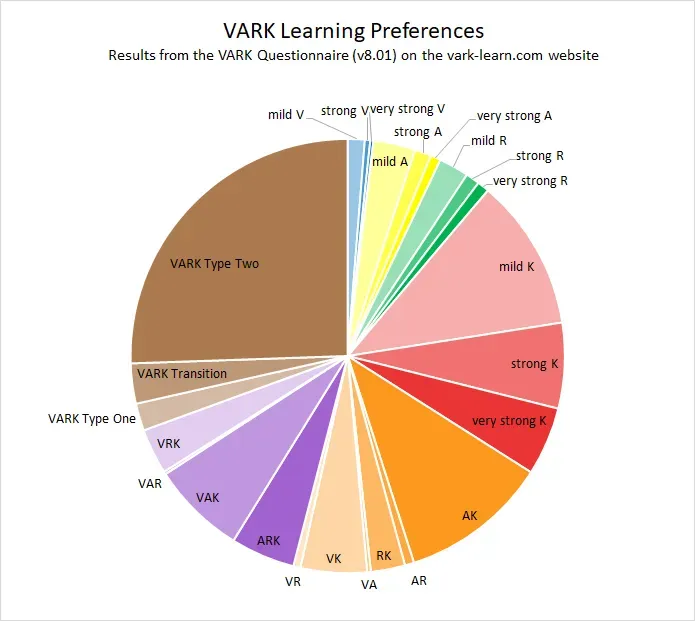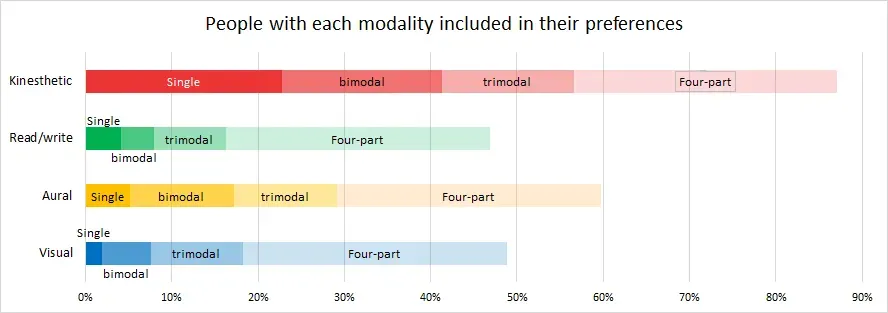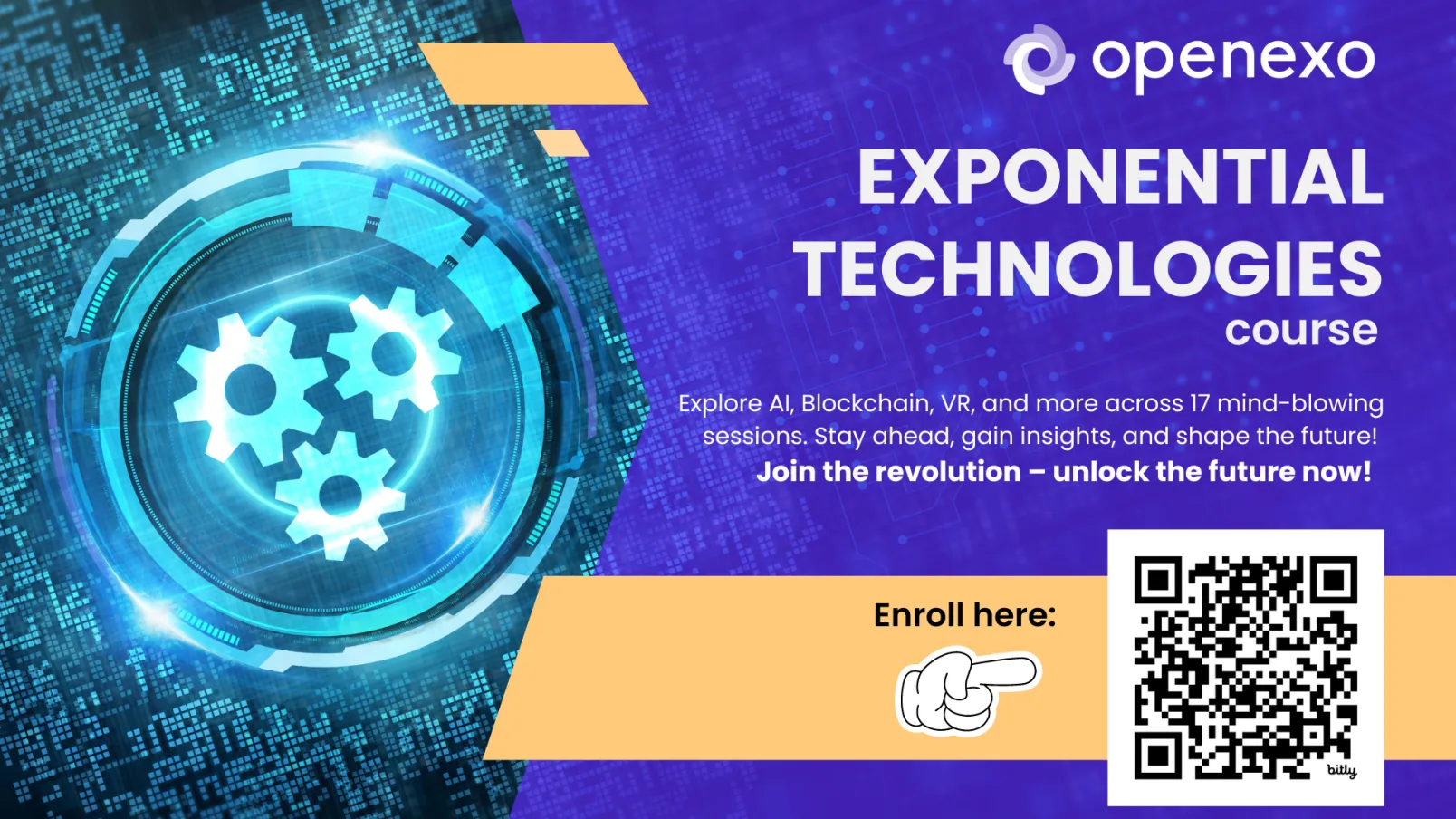
The Future of Education is WOW: Blending VARK, Adaptivity, and AI for Personalized WOW Learning
The VARK model categorizes learners based on preferred modes of engagement, but the future of education lies in AI-powered adaptivity, seamlessly personalizing learning experiences to meet the multifaceted and evolving needs of each individual student in real-time.
VARK is an acronym that refers to the four types of learning styles defined in Neil Fleming’s educational model – Visual, Auditory, Reading/Writing, and Kinesthetic. The VARK model categorizes learners based on their preferred modes of taking in and engaging with new information.
- Visual learners absorb information best through visual aids like diagrams, charts, illustrations, and symbolic artifacts.
- Auditory learners prefer listening to lectures, discussions, and audio materials.
- Reading/writing learners favor textual mediums like textbooks, reports, and online articles.
- Kinesthetic or tactile learners acquire understanding through hands-on practice, simulations, experiments, and other forms of active engagement.
The VARK model provides a framework for educators to develop a multimodal instructional approach catering to all these learning styles. Understanding a student’s particular VARK preferences enables better personalization of teaching methods, assignments, and resources to optimize engagement and outcomes. Incorporating the right balance of visual, auditory, reading/writing, and kinesthetic content and activities ensures an inclusive learning environment.
What is the multimodal approach?
While the VARK model provides a useful foundation, the key is being responsive to each learner’s multifaceted and fluid needs. Research on over 1 million people who completed the VARK questionnaire revealed 66% have multimodal preferences. Just 14% had a single strong preference. This highlights the importance of a nimble multimodal approach adapting to each learner’s visual, auditory, reading, and kinesthetic needs at any given moment.

These needs are further shaped by diverse factors like motivation, emotion, and progress. Only by detecting a student’s state based on real-time behavioral signals can an adaptive platform make prudent adjustments to modalities, content, and experiences.

The future of learning cannot rely on fixed learner profiles. Rather, AI must track how environmental, social, cognitive, and inner factors interact to impact students’ multimodal needs in the learning journey – and continually evolve materials and delivery accordingly.environmental, social, cognitive and inner factors The goal is to harmonize learning modalities with students’ evolving minds and contexts for responsive WOW academia.
What is the adaptive learning?
The future of education will be personalized, adaptive, and powered by AI. By blending frameworks like the VARK learning styles with sophisticated adaptive algorithms and AI, we can create truly personalized and emotionally resonant learning experiences – what I call WOW learning.
While VARK model, categorizing preferences into visual, auditory, reading/writing, and kinesthetic, provides a solid foundation. But adaptive platforms take it further, using AI to analyze each student’s strengths, weaknesses, interests, and priorities in real time. As students engage with lessons, sophisticated machine learning algorithms track their knowledge gains, confusion patterns, attention levels, motivation – and adapt on the fly.
Content is no longer one-size-fits-all. Students receive customized journeys – lessons, assignments, multimedia resources – even the presentation style and pace – tailored uniquely to how they learn best. And we’re not just talking about learning styles. Adaptive AI considers a myriad of factors impacting each student’s learning and engagement – even their emotional state.
This AI-powered adaptivity will extend to detecting and addressing unexpressed learner needs in real-time. While students may not explicitly communicate when they are tired, distracted, or lack motivation, sensors, and algorithms observing their behavioral signals can infer these needs. Adaptive tutors can seamlessly intervene – perhaps suggesting a quick mindfulness break, modifying environmental lighting, or switching to more stimulating content to recharge attention. Even ambient factors like temperature, background noise levels, and connection bandwidth – which learners rarely complain about but can impede concentration – could be automatically optimized by AI as students learn.
AI-powered adaptability for both expressed and unexpressed needs
The future of education lies in anticipating and fulfilling both expressed and unexpressed individual needs from moment to moment to sustain peak motivation and progress. AI tutors will proactively personalize myriad learning experience parameters - location, space, medium, content style and pace, socio-emotional support, and more - for true WOW journeys that unlock every student's potential and dynamically adjust to recapture their attention and get them into visual, auditory or kinesthetic flow states conducive for growth.
It goes beyond responsive content. Imagine an AI that can interpret non-verbal emotional cues and respond with the perfect encouragement, insight, or humor to re-engage that learner. Or that prudently delivers new challenges to students exhibiting readiness or holds back when it detects stress signals. That's the art of WOW learning - understanding each learner at a profoundly human level and orchestrating truly personalized journeys to unlock their potential.
The future of learning must be resilience-based, too. Adaptive AI tutors won't just deliver content - they'll coach critical lifelong skills like dealing with uncertainty, bouncing back from setbacks, and developing growth mindsets through trauma-informed principles. Social-emotional learning will be tightly integrated, helping learners manage relationships and emotions as they progress academically.
And learning will seamlessly weave virtual and augmented environments as well. Students will be able to manipulate VR models of cells, explore the internals of engines through AR, and join immersive simulations - blending visual, auditory, and kinesthetic experiences impossible in physical classrooms. Tactile and even olfactory elements could be integrated to create vivid multisensory learning.
This is the cutting edge of EdTech - where adaptive AI doesn't just respond to feedback but develops genuine relationships with students to personalize journeys in a holistic manner. The next generation of learning looks vastly more emotive, responsive, supportive, and human. That's what the future holds - immersive WOW learning shaped by the synergy of smart frameworks like VARK and increasingly empathetic AI.

Register for the Exponential Technologies self-paced course
AVAILABLE NOW ON THE OPENEXO LEARNING HUB
ExO Insight Newsletter
Join the newsletter to receive the latest updates in your inbox.








